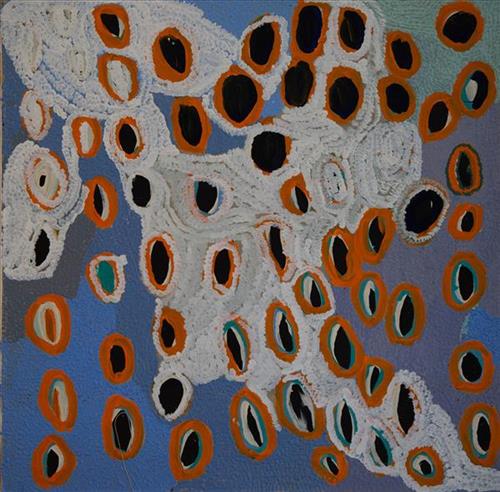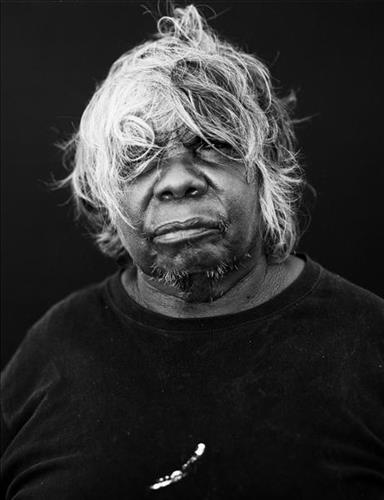111582075958
Pangkal
“Minyipuru (Jakulyukulyu, Seven Sisters), Jukurrpa (Dreaming). Start him from Roebourne, all the Minyipuru. [At] Roebourne camp[ed] all the ladies, they all sit down. That’s where Yurla found those ladies. Walk this way from Roebourne, kakarra (east), walk to Juntiwa, Pangkal. All the way Yurla follow them Seven Sisters, Jakulyukulyu, all the way. In Pangkal dancing, dancing every night, dancing naked. After dancing those Minyipuru been sleep early fella time. Every time fall asleep wake all the ladies up, that fella, naughty fella [Minyawe laughs at this point and indicates the act of sexual intercourse with his hands].
Those ladies been flying up into the sky, open [their] legs and tease that Yurla. Those ladies got tired, turn[ed] to rock to hide from Yurla. Sleep all the lot, round one. [Nyanjilpayi interjects here to say of the Pangkal area as it is today “He [they’re] not yapu (rock), he [they’re] woman, Minyipuru sleeping”.] That’s when he get down his thing [penis] and wake them up to have sex with a Minyipuru. All the ladies get up, fly up to the star[s], all the lot. Next time [they] go down [to] have a look at Juntiwa. Outside Juntiwa they landing, but he [Yurla] came behind again.”
– Minyawe Miller, Nyanjilpayi (Ngarnjapayi) Nancy Chapman and Mayiwalku May Chapman
Pangkal is a rockhole located in the northernmost region of the Martu homelands. Nyanjilpayi camped here with her family as a teenager. As described by Minyawe, Nyanjilpayi and Mayiwalku, Pangkal also features as an important site in the Minyipuru Jukurrpa.
Minyipuru is a central Jukurrpa narrative for Martu, Ngaanyatjarra, Pitjantjatjara and Yankunytjatjara people that is associated with the seasonal Pleiades star constellation. Relayed in song, dance, stories and paintings, Minyipuru serves as a creation narrative, a source of information relating to the physical properties of the land, and an embodiment of Aboriginal cultural laws. Beginning in Roebourne on the west coast of Western Australia, the story morphs in its movement eastward across the land, following the women as they walk, dance, and even fly from waterhole to waterhole. As they travel the women camp, sing, wash, dance and gather food, leaving markers in the landscape and creating landforms that remain to this day, such as groupings of rocks and trees, grinding stones and seeds. During the entirety of their journey the women are pursued by a lustful old man, Yurla, although interactions with other animals, groups of men, and spirit beings are also chronicled in the narrative.
During the pujiman (traditional, desert dwelling) period, Martu would traverse very large distances annually in small family groups, moving seasonally from water source to water source, and hunting and gathering bush tucker as they went. At this time knowledge of water sources was critical for survival, and today Martu Country is still defined in terms of the location and type of water. Each of the hundreds of claypans, rockholes, waterholes, soaks and springs found in the Martu desert homelands is known by name, location, quality and seasonal availability through real life experience and the recounting of Jukurrpa narratives.




